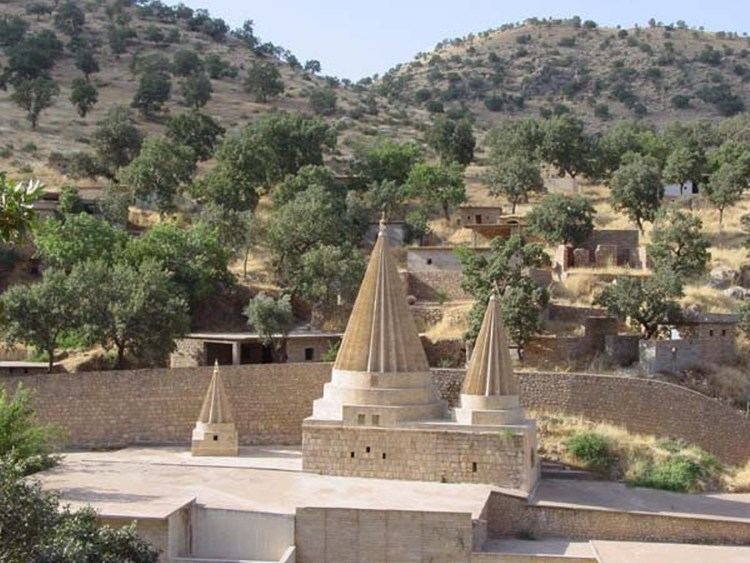Founded circa 2000 BCE | ||
 | ||
Lalish yazidi
Lalish (Kurdish: Laliş, also called Lalişa Nûranî) is a small mountain valley village situated in the Shekhan District of Nineveh Governorate in northern Iraq, near the border with Iraqi Kurdistan. It contains the holiest temple in the Yezidi faith. The temple belongs to ancient times wherein many archaeologists and historians agree that the temple was a part of Sumerian and other ancient Mesopotamian civilizations. Later it became the location of the tomb of Sheikh Adi ibn Musafir, who is a central figure of the Yazidi faith. The village is above the town of Shekhan, which had the second largest population of Yazidi prior to the persecution of Yazidis by ISIL. The village is about thirty-six miles north-east of Mosul.
Contents
- Lalish yazidi
- Map of Lalish Iraq
- Yazidi people fleeing islamic militants take refuge in holy lalish
- History
- References
Map of Lalish, Iraq
At least once in their lifetime, Yazidis are expected to make a six-day pilgrimage to Lalish to visit the tomb of Şêx Adî and other sacred places. These other sacred places are shrines dedicated to other holy beings. There are two sacred springs called Zamzam, which is in a cave below Sheikh Adi's sanctuary, and Kāniyā. Lalish is also the location of pirrā selāt (Ṣerāṭ Bridge) and a mountain called Mt. ʿArafāt which has sites significant in other faiths. Yazidis living in the region are also expected to make a yearly pilgrimage to attend the autumn seven-day Feast of the Assembly, which is celebrated from 23 Aylūl to 1 Tašrīn I.
Yazidi people fleeing islamic militants take refuge in holy lalish
History
Lalish village dates back about 4000 years.
In the early 12th century, Adi ibn Mosāfer moved to Lalish. Adi died in 1162 and was buried. During a major battle against the Yazidi in 1414, the tomb of Adi was razed.
Beginning on 10 August 2014, Yazidi refugees have been fleeing to the village from Sinjar after the Islamic State of Iraq and the Levant placed that city under siege. Many fleeing Sinjar travelled through Syria to reach Lalish and Shekhan.
